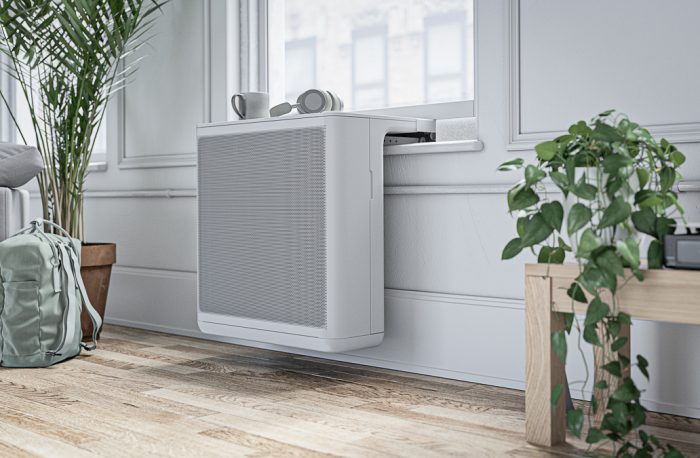In the realm of home climate control, window air conditioners (AC) with heat pumps stand out as versatile solutions, offering both cooling and heating functionalities. This comprehensive guide delves into the workings of window AC with heat pump, exploring their efficiency, installation process, and the myriad benefits they bring to households.
Understanding Window AC with Heat Pump
Overview of Heat Pump Technology: At the core of window AC units with heat pumps lies the ingenious technology of heat pumps. Unlike traditional air conditioners, which only cool the air, heat pumps can reverse their operation to provide warmth during colder months. They accomplish this by extracting heat from the outside air and transferring it indoors, even when outdoor temperatures drop below freezing.
Integration into Window AC Units: The integration of heat pump technology into window AC units marks a significant advancement in home climate control. This dual functionality allows homeowners to efficiently regulate indoor temperatures throughout the year, eliminating the need for separate heating and cooling systems.
Efficiency and Performance
Energy Efficiency: Window AC units with heat pumps are renowned for their energy efficiency. By harnessing heat from the surrounding environment rather than generating it through combustion or resistance heating, heat pumps can provide heating at a fraction of the energy cost of traditional heating systems.
SEER and HSPF Ratings: When evaluating the efficiency of window AC units with heat pumps, two key metrics come into play: Seasonal Energy Efficiency Ratio (SEER) and Heating Seasonal Performance Factor (HSPF). SEER indicates the cooling efficiency of the unit, while HSPF measures its heating efficiency. Higher SEER and HSPF ratings signify greater energy efficiency and cost savings over time.
Performance in Various Climates: The performance of window AC units with heat pumps can vary depending on climatic conditions. While these units excel in moderate climates where temperatures seldom drop below freezing, they may experience reduced efficiency in extremely cold regions. However, advancements in technology have led to the development of models optimized for cold climates, enhancing their performance even in sub-zero temperatures.
Installation Process
Pre-Installation Preparation: Before installing a window AC unit with a heat pump, several preparatory steps are necessary. These include selecting an appropriate location near a power source and ensuring adequate ventilation for both the indoor and outdoor components of the unit.
Mounting the Unit: The installation process typically begins with mounting the unit securely in a window opening. Care must be taken to properly seal any gaps around the unit to prevent air leakage, which can compromise efficiency and indoor air quality.
Electrical Wiring and Setup: Once the unit is mounted, electrical wiring must be connected according to the manufacturer’s instructions. This may involve installing a dedicated circuit or outlet to accommodate the power requirements of the unit.
Testing and Calibration: After installation is complete, the unit should be thoroughly tested to ensure proper operation. This includes verifying both cooling and heating functions, as well as adjusting settings for optimal performance.
Benefits of Window AC with Heat Pump
Year-Round Comfort: Perhaps the most significant benefit of window AC units with heat pumps is their ability to provide year-round comfort. Whether it’s sweltering summer heat or chilly winter nights, these units offer versatile climate control to keep indoor environments comfortable in any season.
Space-Saving Design: Unlike traditional HVAC systems, which require extensive ductwork and indoor equipment, window AC units with heat pumps are compact and space-saving. Their installation in a window opening eliminates the need for floor space, making them ideal for apartments, small homes, and other limited-space environments.
Cost Savings: By combining heating and cooling functionalities into a single unit, window AC units with heat pumps offer significant cost savings compared to maintaining separate heating and cooling systems. Additionally, their energy-efficient operation can lead to lower utility bills over time, further enhancing their economic appeal.
Environmental Sustainability: With growing concerns about climate change and environmental sustainability, the energy efficiency of window AC units with heat pumps makes them an environmentally friendly choice for home climate control. By reducing energy consumption and greenhouse gas emissions, these units contribute to a more sustainable future.
Conclusion
Window AC units with heat pumps represent a pinnacle of innovation in home climate control, offering efficient cooling and heating capabilities in a single, space-saving package. From their energy-efficient operation to their year-round comfort benefits, these units have become indispensable solutions for homeowners seeking versatile and cost-effective climate control solutions. By understanding their workings, efficiency, installation process, and benefits, homeowners can make informed decisions when selecting the ideal window AC unit with a heat pump for their living spaces.







